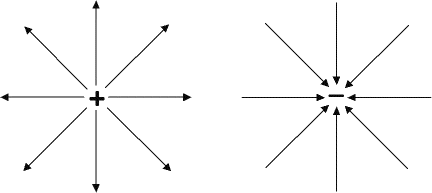Charges with the opposite sign attract. Charges with the same sign repel.
Around each isolated charge there is an electric field. If the charge is positive, the field points away from the charge. If the charge is negative, the field points towards the charge.

Electric charges carry electric current. In metals the charge carriers are electrons, and this is how we commonly think of current. In liquids, positively and negatively charged ions - electrons, atoms or molecules that have lost or gained electrons - can carry the current.
Any material with no charge carriers - free electrons - is an insulator.
